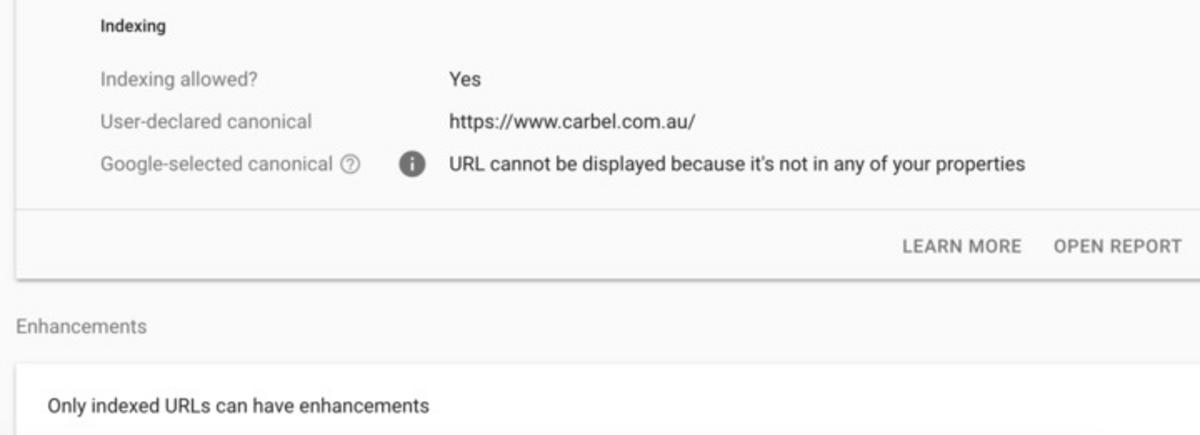BigCommerce SEO problems checklist & How to fix them?
BigCommerce is one of the most prevalent e-commerce solutions on the Internet today, and there are many justified reasons for its popularity. One of the reasons is its great variety of features, SEO included. That being said, BigCommerce’s SEO feature is not without flaws.
Understanding the drawbacks of BigCommerce’s SEO is of great importance, especially when you want your store to rank higher in Google via SEO. Therefore, in today’s article, we will shed light on the BigCommerce SEO problems and solutions for them as well.
And now, without further ado, let’s check out this BigCommerce SEO problems checklist and learn how to fix them!
What is SEO in e-commerce?

E-commerce SEO (Search Engine Optimization) increases the visibility of an online store in search engine results pages (SERPs). It is the method of creating relevant content that attracts customers and ensuring that this content can be successfully found, crawled, and indexed by search engines (most commonly, Google).
Typically, e-commerce SEO entails optimizing the headlines, product descriptions, metadata, internal link structure, and navigational structure for search and user experience.
BigCommerce SEO problems checklist and how to fix them?
In this part, we will give you a checklist of 11 BigCommerce SEO problems. Some of these issues are inherent to BigCommerce, and there are no proper solutions yet.
Please note that we will only discuss solutions for problems where some workarounds or changes can be made.
1. Poor SEO support, documentation, and tutorials
There are several serious problems that the ordinary website owner might not recognize as the BigCommerce platform contains some huge SEO problems. Worryingly, there is very little useful material on the BigCommerce SEO support site and the tutorial section.
With a host of complicated problems on BigCommerce, the platform is supposed to provide better support for SEO professionals who seek help in making relatively fundamental and easy adjustments. Lots of other rival e-commerce platforms do well at this aspect and facilitate merchants’ SEO process.
2. Restricted blog functionality
There are plenty of issues that restrict the SEO capabilities of BigCommerce’s blog. Here are some of the most common ones:
-
BigCommerce would automatically launch a blog on a subdomain, such as blog.yourbigcommercedomain.com. Since Google handles subdomains as independent entities, this is not suitable for SEO, since the organic value of your blog would not help to raise the credibility of your domain as it would if it was set up as a folder. For example, YourBigCommerceDomain.com/blog/.
-
The blog functionality lacks some essential integrated CTA and CRO tools, such as the ability to quickly add buttons, modules for related products, and so on. The BigCommerce blog struggles to push organic traffic and conversions, which is what an e-commerce store blog should do.
-
Because of the limitations of the theme, fundamental changes to blog format through customary coding changes might be substantially more complex, requiring much more time and money.
-
There isn’t a convenient way to change the blog landing page. The blog listing tab, by contrast, always displays the entire blog article on the listing page, resulting in overlapping content problems. This also leads to the lack of canonicals which we’ll be discussing in a minute.
3. Lack of canonical settings

Many shopping cart systems have the option to create canonical URLs for brands and categories, but BigCommerce makes it challenging. Without modifying the theme files directly, there is no other simple way to do this.
Such a simple SEO feature has been requested by BigCommerce users for years, however, it will not be available anytime soon.
4. Slow site speed

Since Google prioritizes the user experience of websites on which it sends search traffic, site speed is a significant ranking factor. No one wants to wait for so long on the Internet. BigCommerce, like most template-oriented shopping cart platforms, is clumsy and cumbersome.
Even if you have a developer to help you with the speed of your website, due to the way BigCommerce is built, making simple improvements to increase site speed is still difficult and time-consuming for a developer.
5. Lack of dev site and staging environment
A Development Site (abbreviated as dev site) is a place on your server where your whole site is copied and replicated for development and testing.
Meanwhile, a staging environment is a near-exact duplicate of a production environment for software testing. Before an application is deployed, staging environments are used to validate codes, builds, and upgrades in a production-like setting to ensure accuracy.
Therefore, it is obvious that the dev site and staging environment are of enormous significance to a BigCommerce blog. However, since BigCommerce cannot quickly create a dev site or staging environment, dev changes to your site become much more complex and difficult to test before going live.
6. Quality Assurance testing

Quality Assurance (QA) is the method of checking a website for faults and defects, such as broken links or no-index tags.
Along with user testing, the QA procedure is used to identify any problems that were missed during the design and development phases, and it is normally done while a project is nearing completion.
In addition to usability, customer experience, security, and efficiency, quality assurance testing is critical for SEO. Because QA tests detect issues such as page speed, broken links, and missed redirects and they make sure that any changes you make to your site will not jeopardize your SEO efforts.
QA testing is one of the most common BigCommerce challenges store owners face because BigCommerce lacks a staging environment, as we have talked about above, to validate changes. Since there is no staging area to test in, changes to the web will be published before they can be tested, which means that all mistakes become visible to the entire public.
While there are a few workarounds, they are often costly and not available to all BigCommerce consumers. For example, if you use a BigCommerce-partnered digital agency, they will be able to test new designs and campaigns in a staging environment. But this would not be a choice if you do not use an agency or if the agency is not a BigCommerce partner.
You can also download a staging app from the BigCommerce app store, but the steep upfront costs would discourage most merchants from purchasing.
The best option for you is to monitor your website carefully to ensure that all new changes are QA tested – even if they are already live. You may also want to use a website crawler to run weekly crawls and show any new problems that need to be fixed to better track the blog.
7. Counterintuitive admin
Making even minor improvements to specific pages on BigCommerce may seem to be a daunting task.
There are many counterintuitive processes on BigCommerce that make BigCommerce a less SEO-friendly platform.
For example, you have to edit a brand page through the “banners” section in the admin, but not with traditional page edits at the category or product level.
8. Pagination
Pagination (the practice of spreading one piece of content across multiple pages) is popular in e-commerce, especially among merchants with large product catalogs. Pagination can improve the user experience, but if done improperly, it can trigger SEO problems.
-
When a long page (for example, a page with many products) spans numerous pages, Google will see many different pages with very similar content. Since Google search engines dislike duplicate content, your pagination can send the wrong signals.
-
If you paginate, the content on the subsequent pages may not be as interesting or unique as the content on the first page. The issue is that when Google crawls these websites, it will deem them to have “thin content” and penalize you for them.
-
Each site has a crawl budget, defined by Google as “the number of URLs Googlebot can and wants to crawl.” Your crawl budget is restricted, so you don’t want to spend it on low-priority sections of your platform. If you have too many paginations, Google will spend your crawl budget on those pages rather than the more important sections of your web.
If you are experiencing SEO issues as a result of pagination, you have some choices for resolving the situation:
- Use rel=” next” and rel=” prev”:
The rel=” next” and rel=” prev” markup, according to Google, gives a clear signal that you want search engines to regard your paginated pages as “as a logical sequence, thereby consolidating their linking properties and usually taking searchers to the first page.”
- Use canonical tags:
Add a canonical tag to your paginations that lead to the main page you want to rank. Canonical tags inform search engines that a certain URL is the “master copy” of a page, meaning that when Google sees the tags, it recognizes that the paginated pages are just copies of the “master” page.
- Exclude the pagination parameters in Google Search Console:
By excluding the parameter (e.g. “p=1, p=2, etc.”) in Search Console, you can tell Google not to index pages.
- Add parameters to robots.txt:
You can also inform Google not to crawl certain pages by adding the pagination parameters to robots.txt.
9. Filters

If customers filter items on your site (by size, color, price, etc. ), you can experience SEO issues if Google indexes such filtered URLs. Since the content on filtered pages isn’t entirely original, Google can mistake them for pages with duplicate or thin content, when they’re all filtered versions of the same page.
To solve this problem, you can use canonical tags, exclude parameters in Search Console, or add the necessary parameters to robots.txt.
10. On-site search results
BigCommerce will generate a dynamic URL exclusively for the search query (i.e. “yoursite.com/search=”blue-shirts”) if someone searches on your store “blue shirts”.
Issues emerge when Google indexes these search pages. Search results pages, like pagination and filters, may raise red flags if they appear to contain redundant or thin content. These pages will also deplete your crawl budget, making it impossible for Google to index your higher-quality pages.
Again, you can fix this problem by avoiding being indexed by Google. Try excluding the necessary parameters in Search Console or including them in your robots.txt file.
11. 404S instead of 410S

While 404 means page not found, 410 means gone forever. Therefore, the best option when it comes to pages that are good for good is to use a 410 status code instead of a 404.
However, BigCommerce does not allow you to create 410 pages, it only lets you have a 404 status code. Although this is not a big problem, you should take note of this issue if you care about SEO nuances.
Conclusion
Every shopping cart has its drawbacks, and BigCommerce is not exempt. Along with many great functionalities that BigCommerce offers customers, it also has big issues with its SEO feature.
In this article, we have pointed out 11 SEO problems and some solutions available that we think merchants like you should take into account.
We hope this article helps you with SEO management on your BigCommerce online store. If you have any questions, feel free to comment down below.
Thank you for reading, and we’ll see you in the next post.





